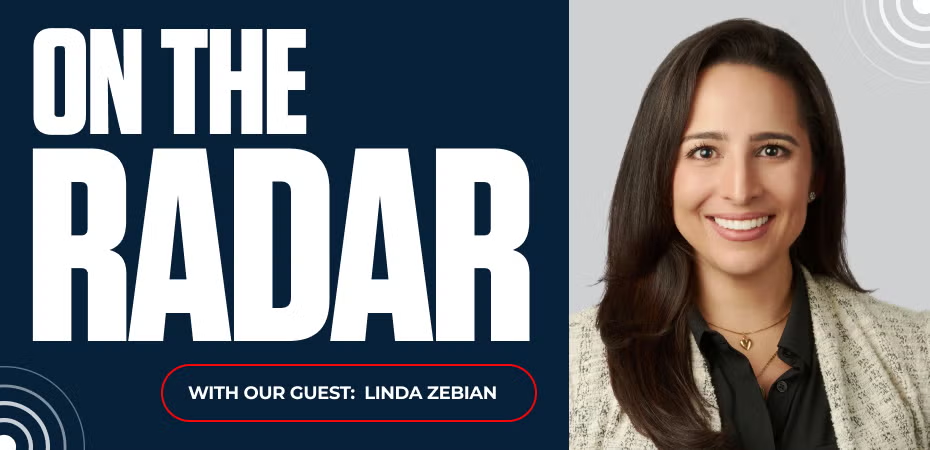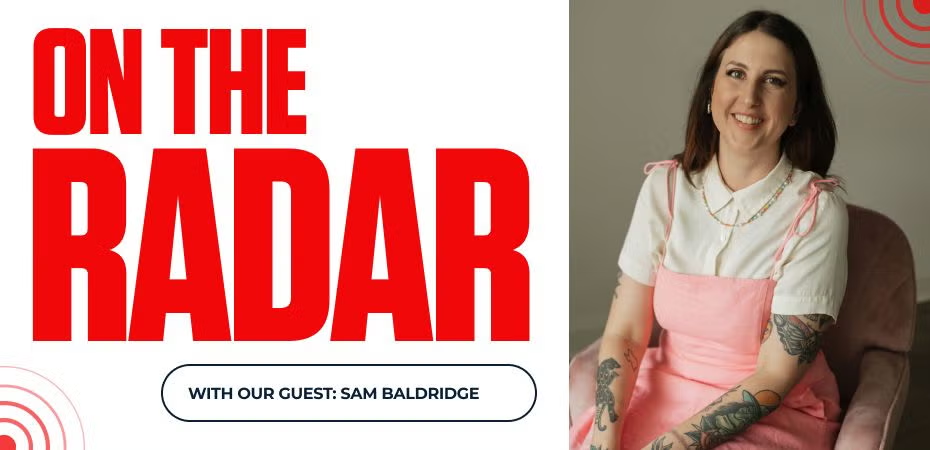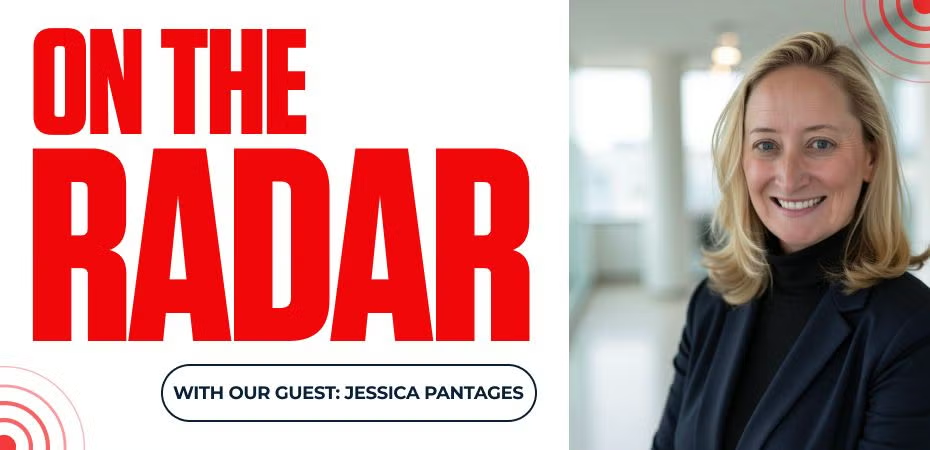October 7, 2025
| On the Radar | by Eileen Belden | Branding,
Content,
Social Media
From The New York Times to Muck Rack: Linda Zebian on Knowing What’s Newsworthy

Linda Zebian knows how to tell a good story. As VP of Communications at Muck Rack, she leads a lean, high-impact team responsible for brand, content, product marketing, internal comms, and more. Her approach is grounded in the instincts she developed over 10 years in corporate comms at The New York Times, where she learned what gets greenlit in a newsroom and what doesn’t.
Today, she brings that editorial mindset to tech PR, using proprietary research and sharp positioning to help Muck Rack show up like a category leader. We sat down with Linda to talk about how she builds momentum with data, pitches with discipline, and makes every word count.
Q: Why has proprietary research become such a core part of your comms strategy?
Linda Zebian
Because it works. We’re in a bloated, noisy information environment where everyone has opinions but not always the credibility to back them up. Research gives you something real to stand on. It builds trust. It helps us tell more compelling stories that consumers want to read, and frankly, it helps journalists do their jobs. We have a Columbia-trained data journalist on the team, Matthew Albasi, and he’s incredible. At this point we’re putting out research almost every month.
And it’s not just for media. Research fuels our LinkedIn presence, and supports sales and demand gen. Especially on LinkedIn, proprietary research is gold. It cuts through. It gets people talking.
Q: What’s one example of a research-driven campaign that really took off?
Linda Zebian
This summer, we released What Is AI Reading?, a report that analyzed how large language models cite and surface content. It found that 95% of citations in LLMs come from unpaid media, and close to 30% are from journalistic content specifically. When recency is factored in, that number climbs even higher. For PR and comms teams, that’s a huge moment of validation. The work we’re doing directly shapes how brands show up in AI-generated search.
To make the most of it, we released the data before the launch of our generative AI product, Generative Pulse. We partnered with Axios Communicators, gave them an exclusive, built a microsite with a countdown, and teased the findings. The buzz was instant. Journalists picked it up, we got inbound interest from events and podcasts, and it positioned us as a go-to resource in this space before we even talked about the product.
Q: What made Axios the right outlet for the exclusive?
Linda Zebian
We were strategic about that decision. Reach wasn’t the only goal. I wanted someone who could really tell the story who understands PR and comms deeply and could speak to the fact that this data validates the value of our work. Axios Communicators, and specifically Eleanor Hawkins, was perfect for that. She already covers the industry, she understands the nuance, and she knows the players. She spoke with our CEO and Senior Data Scientist, and ultimately the piece landed so well because it was written by someone who truly understood the implications of the research, and that made all the difference.
Q: You spent 10 years in corporate communications at The New York Times. How has that shaped the way you work now?
Linda Zebian
That experience is still my foundation. I learned how a newsroom operates—how stories get pitched, what gets prioritized, what gets ignored, and how editors work with reporters. I also developed a strong sense of news judgment, which I apply every day. I tell my team: if we’re not at least 60 or 70 percent confident a pitch will land, we don’t send it. We use that time for something more strategic.
It also sharpened my writing. I care deeply about the words we use, whether it’s a headline, a social post, or an internal email. If it’s got our name on it, it should be clear, tight, and engaging.
Q: What advice would you give to someone just starting out in PR or communications?
Linda Zebian
Write your own stuff. Don’t rely on tools to do the thinking for you, not at first. AI is incredible, and I use it daily, but you have to build your own strategic muscle before you can fully take advantage of it. If you can’t think clearly, frame a narrative, or make a case in your own words, no tech is going to save you in the room with executives. If you want a seat at the table in your 30s or 40s, you need to be building those muscles in your 20s. That means practicing, writing, pitching, and learning what works. No shortcuts.
If you’re looking for ways to strengthen your editorial and PR strategy, we’d love to hear from you. Reach out to our team to learn how REQ helps organizations like yours maximize the impact of your communications plan.

